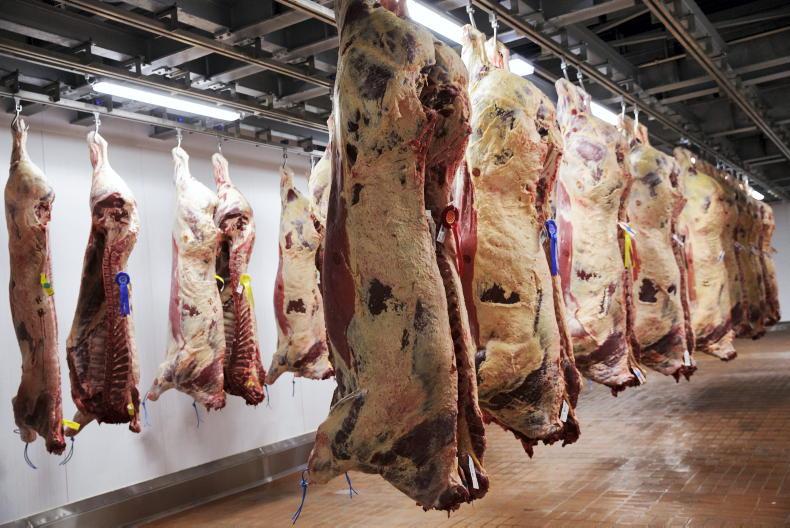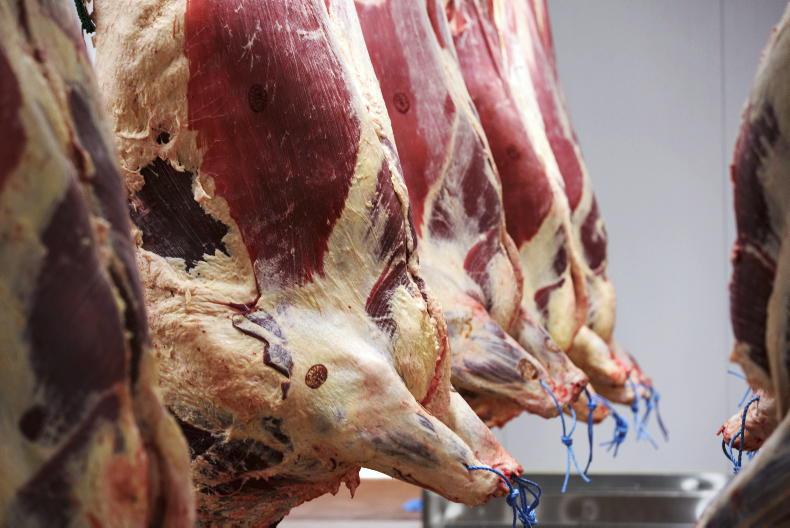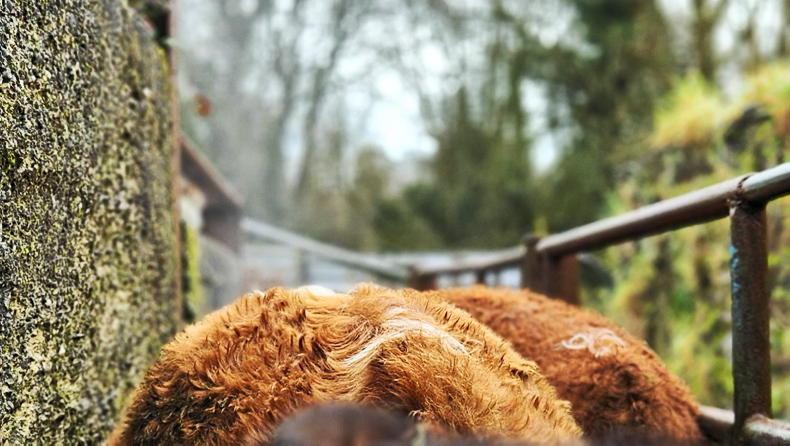The stock bull is probably the most valuable animal in the herd.
So don’t forget to give the herd sire attention over winter.
Outlined are five tips to managing stock bulls during the housing period.
1. Housing options
Think about where the bull will be housed. Keep the bull away from maiden heifers or empty cows being fed for slaughter, as these animals will come in and out of heat regularly.
If the bull is being housed on slats with a group of cows, reduce the numbers in the pen to ensure there is plenty of lying space and standing space at the feed rail.
You don’t want the bull bulldozing heavily pregnant cows as he tries to access feed. Also, make sure the bull can get his head through the feed barrier without getting stuck.
If housing the bull in a separate pen, be wary of the animal any time you have to enter the pen. When isolated, a bull can become aggressive, especially if there are cows in heat nearby.
If housing side by side with other stock bulls, make sure there are secure barriers between both animals. Having an in-calf cow with each bull can lower aggression, but space may be limited.
Always keep safety in mind. If you have to enter the bull pen, have an alternative escape route in case of emergency.
2. Keeping the bull fit on his feet
Many farmers will use a calving pen for housing the bull. This is fine in theory, but, more often than not, such pens will be far too small for a mature stock bull.
Bulls need exercise to keep them correct on legs and feet. They can weigh anywhere from 800kg to 1,100kg liveweight and this puts pressure on the animal’s legs and joints.
If possible, can the bull be allowed to stand in the handling unit every so often for a bit more exercise?
3. Flooring options
Due to the weight of the bull, standing on concrete in a confined space all winter is far from ideal and, again, can create issues with feet.
Slats can be extremely slippy when dirty, making bulls less sure-footed. Some young bulls purchased this autumn, or back in the spring, might never have stood on slats before.
A straw bed provides greater traction and comfort for the bull. At the very least, rubber mats on top of slats may be better to improve grip and comfort.
4. Diet and body condition
Keep bulls in a lean, fit condition when housed. Excessive weight will increase problems with mobility, especially for a bull housed on slats.
As winter moves towards spring, the bull can have body condition built up in preparation for the breeding season next May or June.
Offer average- to good-quality silage around 68% DMD or better to maintain body condition. Introduce concentrate around February or March to start building condition ahead of breeding.
5. Parasite and disease control
Don’t forget to include the bull in your winter health programme. Treat for fluke and worms as necessary, as well as lice. If the herd is vaccinated for diseases such as BVD or lepto, include the bull in the treatment plan.
Read more
€1.7m paid out in electronic tag scheme
16,000 ACRES farmers in limbo
The stock bull is probably the most valuable animal in the herd.
So don’t forget to give the herd sire attention over winter.
Outlined are five tips to managing stock bulls during the housing period.
1. Housing options
Think about where the bull will be housed. Keep the bull away from maiden heifers or empty cows being fed for slaughter, as these animals will come in and out of heat regularly.
If the bull is being housed on slats with a group of cows, reduce the numbers in the pen to ensure there is plenty of lying space and standing space at the feed rail.
You don’t want the bull bulldozing heavily pregnant cows as he tries to access feed. Also, make sure the bull can get his head through the feed barrier without getting stuck.
If housing the bull in a separate pen, be wary of the animal any time you have to enter the pen. When isolated, a bull can become aggressive, especially if there are cows in heat nearby.
If housing side by side with other stock bulls, make sure there are secure barriers between both animals. Having an in-calf cow with each bull can lower aggression, but space may be limited.
Always keep safety in mind. If you have to enter the bull pen, have an alternative escape route in case of emergency.
2. Keeping the bull fit on his feet
Many farmers will use a calving pen for housing the bull. This is fine in theory, but, more often than not, such pens will be far too small for a mature stock bull.
Bulls need exercise to keep them correct on legs and feet. They can weigh anywhere from 800kg to 1,100kg liveweight and this puts pressure on the animal’s legs and joints.
If possible, can the bull be allowed to stand in the handling unit every so often for a bit more exercise?
3. Flooring options
Due to the weight of the bull, standing on concrete in a confined space all winter is far from ideal and, again, can create issues with feet.
Slats can be extremely slippy when dirty, making bulls less sure-footed. Some young bulls purchased this autumn, or back in the spring, might never have stood on slats before.
A straw bed provides greater traction and comfort for the bull. At the very least, rubber mats on top of slats may be better to improve grip and comfort.
4. Diet and body condition
Keep bulls in a lean, fit condition when housed. Excessive weight will increase problems with mobility, especially for a bull housed on slats.
As winter moves towards spring, the bull can have body condition built up in preparation for the breeding season next May or June.
Offer average- to good-quality silage around 68% DMD or better to maintain body condition. Introduce concentrate around February or March to start building condition ahead of breeding.
5. Parasite and disease control
Don’t forget to include the bull in your winter health programme. Treat for fluke and worms as necessary, as well as lice. If the herd is vaccinated for diseases such as BVD or lepto, include the bull in the treatment plan.
Read more
€1.7m paid out in electronic tag scheme
16,000 ACRES farmers in limbo










SHARING OPTIONS